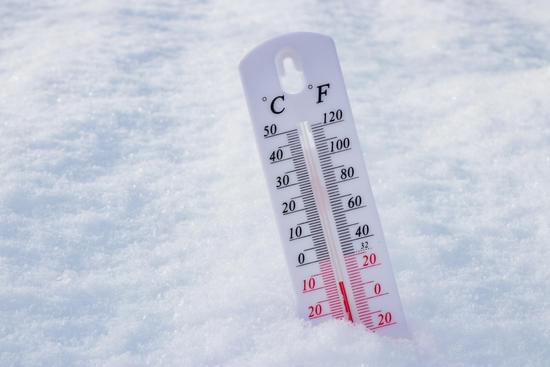24 Celsius to Fahrenheit: A Comprehensive Temperature Conversion Guide

Temperature conversion is a fundamental aspect of science, weather forecasting, cooking, and everyday life. One of the most common conversions is between Celsius and Fahrenheit, two widely used temperature scales. If you’ve ever wondered how to convert 24 Celsius to Fahrenheit, this article provides a detailed explanation, step-by-step methods, and practical applications.
Understanding temperature conversions is essential for travelers, students, chefs, and professionals who work with international data. The Celsius scale is used in most countries, while Fahrenheit remains prevalent in the United States. Converting between these scales ensures accurate measurements and better communication.
In this guide, we will explore the mathematical formula for converting 24°C to °F, discuss the history of both temperature scales, and answer frequently asked questions. By the end, you’ll have a thorough understanding of temperature conversion and its real-world significance.
Understanding Celsius and Fahrenheit Scales
Before diving into the conversion process, it’s important to understand the two temperature scales involved.
What is Celsius (°C)?
The Celsius scale, also known as centigrade, is a metric temperature scale where 0°C represents the freezing point of water and 100°C represents the boiling point at standard atmospheric pressure. It was developed by Swedish astronomer Anders Celsius in 1742 and is used in most countries worldwide for scientific and everyday measurements.
What is Fahrenheit (°F)?
The Fahrenheit scale was introduced by German physicist Daniel Gabriel Fahrenheit in 1724. In this scale, 32°F is the freezing point of water, and 212°F is the boiling point. The Fahrenheit system is primarily used in the United States and a few other regions.
Key Differences Between Celsius and Fahrenheit
- Freezing and Boiling Points:
- Celsius: 0°C (freezing), 100°C (boiling)
- Fahrenheit: 32°F (freezing), 212°F (boiling)
- Degree Interval:
- A 1°C change is equivalent to a 1.8°F change.
- Usage:
- Celsius is standard in most countries, while Fahrenheit is mainly used in the U.S.
Understanding these differences helps in grasping why conversion between the two scales is necessary.
How to Convert 24 Celsius to Fahrenheit
Converting Celsius to Fahrenheit involves a straightforward mathematical formula. Below, we break down the steps to ensure accuracy.
The Conversion Formula
The formula to convert Celsius (°C) to Fahrenheit (°F) is:
°F=(°C×95)+32
Alternatively, it can be written as:
°F=(°C×1.8)+32
Step-by-Step Conversion of 24°C to °F
Let’s apply the formula to convert 24 Celsius to Fahrenheit:
- Multiply 24 by 9/5 (or 1.8):
24×1.8=43.2
- Add 32 to the result:
43.2+32=75.2
Therefore, 24°C is equal to 75.2°F.
Why This Formula Works
The formula accounts for the different zero points and scaling between the two temperature systems. Since Fahrenheit has a smaller degree interval (1°F is about 0.556°C), multiplying by 1.8 adjusts the scale before adding 32 to align the freezing points.
Practical Applications of 24°C to °F Conversion
Knowing how to convert temperatures is useful in various real-life scenarios. Below are some practical applications where converting 24 Celsius to Fahrenheit is relevant.
1. Weather Forecasting
Meteorologists and weather apps often display temperatures in both Celsius and Fahrenheit. For example, if a European weather report says it’s 24°C, Americans may need to know that it’s 75.2°F—a warm and pleasant day.
2. Travel and International Communication
Travelers visiting countries that use different temperature scales must understand conversions. If you’re used to Fahrenheit and see 24°C on a foreign weather forecast, knowing it’s 75.2°F helps in packing appropriate clothing.
3. Cooking and Baking
Recipes from different countries may list oven temperatures in Celsius or Fahrenheit. If a British recipe recommends baking at 180°C, an American cook might need to convert it to 356°F. Similarly, knowing that 24°C is 75.2°F helps in food storage and fermentation processes.
4. Scientific Research and Engineering
Scientists and engineers working with international collaborators must ensure accurate temperature readings. Converting between Celsius and Fahrenheit prevents errors in experiments, climate studies, and industrial processes.
Common Mistakes in Temperature Conversion
While converting temperatures is simple, errors can occur. Below are some common mistakes and how to avoid them.
1. Forgetting to Add 32
Some people multiply by 1.8 but forget the final step of adding 32, leading to incorrect results. For example, multiplying 24°C by 1.8 gives 43.2, but without adding 32, the conversion is wrong.
2. Misplacing the Decimal Point
Incorrect decimal placement can lead to significant errors. For instance, writing 75.2°F as 752°F drastically changes the interpretation.
3. Confusing Celsius and Fahrenheit Scales
Mixing up which scale is which can cause confusion. Always double-check whether the original temperature is in Celsius or Fahrenheit before converting.

Frequently Asked Questions (FAQs)
1. What is 24 degrees Celsius in Fahrenheit?
Answer: 24°C is equal to 75.2°F.
2. How do you convert Celsius to Fahrenheit easily?
Answer: Use the formula:
°F=(°C×1.8)+32
Multiply the Celsius temperature by 1.8 and add 32 to get Fahrenheit.
3. Why does the Fahrenheit scale start at 32?
Answer: Daniel Fahrenheit set 32°F as the freezing point of water and 212°F as the boiling point, creating a 180-degree interval between them.
4. Is 24°C considered hot or cold?
Answer: 24°C (75.2°F) is generally considered warm and pleasant, ideal for outdoor activities.
5. Can I use an online converter for Celsius to Fahrenheit?
Answer: Yes, online converters provide quick results, but understanding the formula ensures accuracy in manual calculations.
6. What is the fastest way to estimate Celsius to Fahrenheit?
Answer: A rough estimate is to double the Celsius temperature and add 30 (instead of 32). For 24°C:
(24×2)+30=78°F
This approximation (78°F vs. 75.2°F) is close but not exact.
Conclusion
Converting 24 Celsius to Fahrenheit is a simple yet essential skill in a globally connected world. By applying the formula °F = (°C × 1.8) + 32, we find that 24°C equals 75.2°F. This conversion is useful in weather reporting, travel, cooking, and scientific research.
Understanding the differences between Celsius and Fahrenheit helps avoid mistakes and ensures accurate temperature interpretations. Whether you’re a student, traveler, chef, or scientist, mastering this conversion enhances precision in daily tasks and professional work.
Next time you encounter a temperature in Celsius, you’ll confidently convert it to Fahrenheit—and vice versa—without hesitation. Keep this guide handy for quick reference, and explore more temperature conversions to expand your knowledge further.



